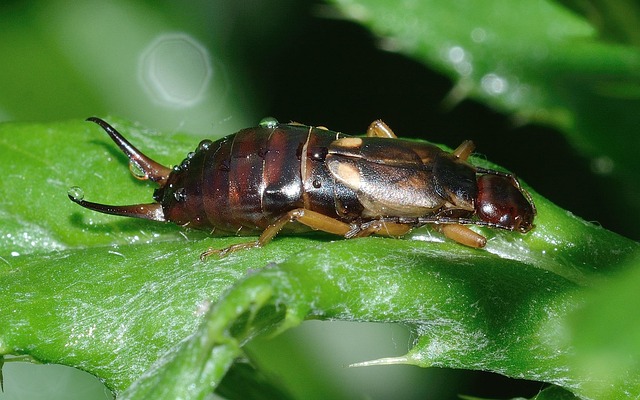Earwigs infiltrate homes through tiny gaps during warmer months, preferring dark, damp spaces like cracks around windows/doors, under sinks, and plant pots. Effective residential earwig treatment involves identifying and sealing entry points (e.g., utility pipes, foundation cracks), disrupting nesting habits with regular inspections. Natural repellents, professional pest control, and maintaining an inhospitable environment prevent long-term infestations.
Keep your home pest-free with expert advice on sealing entry points to keep earwigs at bay. Understanding these invasive insects and their preferred hiding spots is key to successful residential earwig treatment. Learn about common entry points, identify where they lurk in your home, and discover effective strategies for long-term prevention. Take control of your space and implement proven residential earwig treatment techniques to eliminate these pesky critters for good.
Understanding Earwigs and Their Entry Points
Earwigs are tiny insects known for their peculiar appearance and tendency to invade homes, especially during the warmer months. Understanding their behavior and preferred entry points is half the battle when it comes to implementing an effective residential earwig treatment plan. These pests typically seek out tight spaces and crevices to lay eggs and establish nests, often entering homes through small gaps around doors, windows, electrical wires, and pipes.
Sealing these entry points is a key strategy in preventing earwig infestations. It involves a thorough inspection of the property to identify potential access points and then sealing them with appropriate materials like caulk or steel wool. By blocking off these routes, you disrupt their ability to enter homes, disrupting their breeding cycle and reducing the risk of an infestation.
Identifying Common Earwig Hiding Spots in Homes
Earwigs are sneaky creatures and they love to hide in dark, damp spaces within homes. Identifying their favorite hiding spots is the first step towards an effective residential earwig treatment. Common areas include cracks and crevices around windows, doors, and baseboards, as well as under kitchen sinks and in bathroom cabinets. Earwigs also tend to nest in plant pots, so checking potted plants for signs of infestation is crucial. Additionally, they are attracted to moisture, so areas with high humidity like basements or crawl spaces should be thoroughly inspected. By understanding where earwigs congregate, homeowners can better seal entry points and disrupt their habitat, making it easier to keep these pests at bay.
Effective Residential Earwig Treatment Strategies
Implementing effective residential earwig treatment strategies is key to sealing entry points and keeping these pests at bay. Start by identifying common access points such as gaps around utility pipes, cracks in foundations, and openings in windows or doors. Sealing these areas with caulk or weatherstripping is a robust preventive measure. Regularly inspect your home for any signs of damage or new entry points, addressing them promptly to disrupt earwig infestations early on.
In addition to physical barriers, using natural repellents like mint, lemon, or neem oil around the perimeter of your property can be an eco-friendly solution. For more severe cases, professional pest control services offer safe and tailored residential earwig treatment options, ensuring that these resilient insects are effectively managed without causing harm to your family or pets.
Long-Term Prevention Measures for Earwig Infestations
To ensure long-term prevention of earwig infestations in your residential property, consider implementing stringent measures that create an inhospitable environment for these pests. Sealing entry points is a crucial first step, but maintaining a proactive approach will offer ongoing protection. Inspect your home thoroughly, identifying potential points of entry along foundations, windowsills, doors, and vents. Use caulk or weatherstripping to seal gaps larger than 1/8th of an inch, as this is the typical size earwigs can squeeze through. Additionally, install fine mesh screens over vents and ensure all windows and doors have tight-fitting seals. Regularly maintaining these barriers will significantly reduce the risk of future infestations.
For enhanced protection, consider incorporating natural repellents like mint, lavender, or citronella around your home’s perimeter. Earwigs are averse to strong scents, so planting these herbs in gardens or using essential oils can act as a deterrent. Additionally, keeping your lawn well-trimmed and removing potential hiding spots like woodpiles or compost heaps will make your property less appealing to earwigs. Regular residential earwig treatment, including professional services, can also be employed as a proactive measure, especially in areas prone to severe infestations.
Sealing entry points is a key strategy in any comprehensive residential earwig treatment plan. By understanding where these pests hide and implementing effective prevention measures, homeowners can significantly reduce the risk of future infestations. Regular inspections and prompt action are essential to maintaining a pest-free home. Remember, a well-informed approach to earwig control can ensure these intruders don’t return, providing you with peace of mind and a more comfortable living environment.
